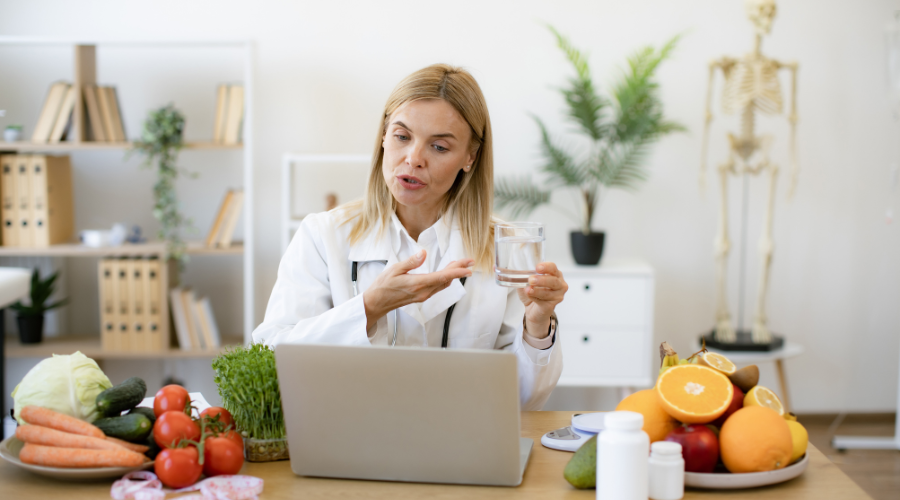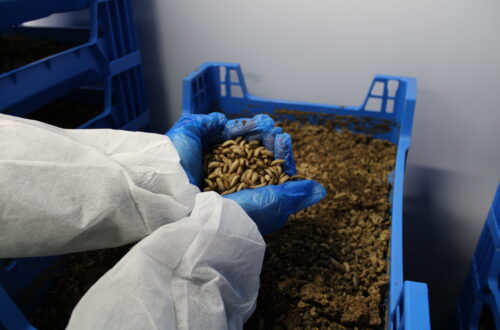Understanding Food-Drug Interactions
Imagine sitting down to a hearty breakfast of grapefruit juice and a spinach omelet, only to find out later that your morning meal just threw a wrench into the effectiveness of your medication. It’s a surprising reality for many: the foods we eat can significantly alter how our medicines work. Food-drug interactions happen when something you eat or drink changes how a medication is absorbed, metabolized, or eliminated in your body. These interactions can make your medicine less effective, amplify its side effects, or even cause new, unexpected problems.
Why Food and Medicine Don’t Always Mix
When you swallow a pill, it embarks on a complex journey through your digestive system, liver, and bloodstream. Foods can interfere at any stage, binding to the drug, altering its absorption rate, or affecting how your body processes it. For instance, some nutrients can form complexes with medications, preventing them from being absorbed properly, while others can mess with enzymes in your liver that break down drugs. Understanding these interactions is crucial for anyone taking prescription or over-the-counter (OTC) medicines.
The Stakes Are High
Food-drug interactions aren’t just a minor inconvenience—they can have serious consequences. A medication that’s not absorbed properly might fail to treat your condition, while one that lingers too long in your system could lead to toxic side effects. For example, a patient taking a blood thinner like warfarin might unknowingly increase their risk of blood clots by eating too many leafy greens. These risks highlight the importance of knowing which foods to avoid or consume carefully when on medication.
Common Foods That Interfere with Medications
Certain foods are notorious for causing trouble with medications. Let’s explore the most common culprits and how they can disrupt your treatment.
Grapefruit: The Citrus Saboteur
Grapefruit and its juice are infamous for interfering with a wide range of medications, including statins for cholesterol, blood pressure drugs, and even some anti-anxiety medications. Grapefruit contains compounds called furanocoumarins that inhibit an enzyme in your liver and intestines (CYP3A4), which is responsible for breaking down many drugs. This can cause the drug to build up in your bloodstream, increasing the risk of side effects like muscle breakdown or liver damage.
Other Citrus Fruits to Watch
Seville oranges, pomelos, and tangelos can also cause similar interactions due to their chemical makeup. If your medication comes with a grapefruit warning, it’s wise to avoid these fruits as well. Always check with your pharmacist to confirm which fruits are safe.
Dairy Products: The Calcium Conundrum
Milk, yogurt, and cheese are packed with calcium, which can bind to certain medications like tetracycline and ciprofloxacin antibiotics, forming insoluble complexes that your body can’t absorb. This reduces the drug’s effectiveness, potentially allowing infections to persist. To avoid this, take these medications at least two hours before or six hours after consuming dairy or calcium-fortified products like orange juice.
Fortified Foods: Hidden Calcium Risks
Many processed foods, such as cereals and energy bars, are fortified with calcium or other minerals like magnesium and iron. These can also interfere with antibiotics and other drugs like bisphosphonates, used for osteoporosis. Always read labels to spot fortified ingredients that could sabotage your medication.
Leafy Greens: The Vitamin K Villain
Leafy greens like kale, spinach, and broccoli are nutritional powerhouses, but their high vitamin K content can spell trouble for people on blood thinners like warfarin. Vitamin K helps your blood clot, which directly counteracts warfarin’s anticoagulant effects, potentially increasing the risk of dangerous clots. The key isn’t to avoid these veggies entirely but to eat them consistently to keep your vitamin K levels stable.
Consistency Is Key
If you love your greens, talk to your doctor about maintaining a steady intake. Sudden changes in your diet—like binging on kale salads or skipping veggies altogether—can throw off your medication’s balance. Your doctor may adjust your dose to accommodate your diet.
Tyramine-Rich Foods: The Blood Pressure Booster
Foods like aged cheeses, cured meats, fermented vegetables, and red wine contain tyramine, an amino acid that can cause a dangerous spike in blood pressure when combined with monoamine oxidase inhibitors (MAOIs), used for depression or Parkinson’s disease. Tyramine builds up in the body when MAOIs block its breakdown, potentially leading to a hypertensive crisis.
Foods to Avoid with MAOIs
Here’s a quick list of tyramine-rich foods to steer clear of if you’re on MAOIs:
- Aged cheeses (cheddar, Swiss, blue cheese)
- Cured meats (salami, pepperoni)
- Fermented foods (sauerkraut, kimchi)
- Red wine, beer, and soy products
Always store these foods properly and consume them fresh to minimize tyramine content.
Licorice: The Sneaky Sodium Retainer
Black licorice contains glycyrrhizic acid, which can interfere with blood pressure medications, blood thinners, and pain relievers by causing sodium retention and potassium loss. Excessive licorice consumption (more than 10–30 grams daily or half a cup of licorice tea) can lead to high blood pressure, edema, and even heart rhythm issues.
A Personal Tale of Licorice Overload
A friend of mine, an avid licorice lover, once ended up in the ER with skyrocketing blood pressure after weeks of snacking on licorice candy while on an antihypertensive drug. Her doctor traced the issue back to her licorice habit, a reminder that even “healthy” treats can pack a punch when mixed with medication.
How Food-Drug Interactions Work
To grasp why foods mess with medicines, let’s break down the science in a way that’s easy to digest.
Absorption: The First Hurdle
When you take a pill, it needs to dissolve in your stomach or intestines and pass into your bloodstream. Foods can either speed up or slow down this process. For example, high-fat meals can delay the absorption of some drugs, like the anti-tubercular drug cycloserine, reducing its effectiveness. Conversely, taking certain medications like glimepiride with a meal can improve absorption and ensure consistent results.
Metabolism: The Liver’s Role
Once absorbed, many drugs are processed by enzymes in your liver, particularly cytochrome P450 enzymes. Foods like grapefruit can inhibit these enzymes, causing drugs to linger in your system longer than intended. This can amplify side effects or lead to toxicity. On the flip side, some foods can speed up metabolism, reducing a drug’s effectiveness.
Excretion: Clearing the System
Foods can also affect how quickly your body eliminates a drug. For instance, high-potassium foods like bananas can interfere with ACE inhibitors, used for blood pressure, by causing potassium buildup, which may lead to muscle weakness or heart arrhythmias. Your kidneys play a big role here, and dietary changes can tip the balance.
Medications Most Affected by Food
Not all drugs are equally sensitive to food interactions. Here’s a look at some of the most commonly affected medications and the foods to watch out for.
Table: Common Medications and Their Food Interactions
| Medication Type | Common Drugs | Foods to Avoid | Potential Effect |
|---|---|---|---|
| Antibiotics | Tetracycline, Ciprofloxacin, Levofloxacin | Dairy, calcium-fortified foods | Reduced absorption, less effective treatment |
| Blood Thinners | Warfarin | Leafy greens, vitamin K-rich foods | Reduced anticoagulant effect, clot risk |
| Statins | Simvastatin, Atorvastatin | Grapefruit, grapefruit juice | Increased drug levels, risk of side effects |
| MAOIs | Phenelzine, Tranylcypromine | Tyramine-rich foods (aged cheese, wine) | Hypertensive crisis, increased blood pressure |
| ACE Inhibitors | Lisinopril, Enalapril | High-potassium foods (bananas, avocados) | Potassium buildup, heart rhythm issues |
Antibiotics: Timing Is Everything
Antibiotics like tetracycline and fluoroquinolones are particularly finicky about food. Dairy products and calcium-fortified foods can bind to these drugs, forming complexes that your body can’t absorb. To avoid this, take these medications on an empty stomach or follow your pharmacist’s timing instructions.
Blood Thinners: A Balancing Act
Warfarin users need to maintain a consistent intake of vitamin K-rich foods to avoid swings in their medication’s effectiveness. A sudden kale smoothie obsession could counteract the drug, while cutting out greens entirely might make it too potent, increasing bleeding risk.
Statins: Grapefruit’s Nemesis
Statins, used to lower cholesterol, are highly sensitive to grapefruit. Even a small glass of grapefruit juice can increase the drug’s concentration in your blood, raising the risk of muscle pain or liver damage. Always check your medication’s label for grapefruit warnings.
Pros and Cons of Managing Food-Drug Interactions
Pros of Understanding Food-Drug Interactions
- Improved Medication Effectiveness: Knowing which foods to avoid ensures your medicine works as intended.
- Reduced Side Effects: Proper timing and food choices can minimize unwanted effects like nausea or toxicity.
- Empowered Health Decisions: Awareness allows you to make informed choices about your diet and medication schedule.
- Better Communication with Providers: Discussing interactions with your doctor or pharmacist can lead to personalized advice.
Cons of Managing Food-Drug Interactions
- Dietary Restrictions: Avoiding favorite foods like grapefruit or cheese can feel limiting.
- Complexity: Keeping track of which foods interact with which drugs can be overwhelming.
- Inconvenience: Timing meals and medications separately may disrupt your routine.
- Risk of Oversight: Missing a food interaction warning could lead to unintended health consequences.
Real-Life Examples: When Food and Drugs Collide
Let’s bring this to life with a couple of stories that show how food-drug interactions can sneak up on you.
The Grapefruit Juice Mishap
My neighbor, Sarah, was prescribed a statin for high cholesterol. She loved starting her day with fresh grapefruit juice, unaware that it was causing her medication to build up in her system. After weeks of muscle aches and fatigue, her doctor pinpointed the culprit: grapefruit juice. Switching to orange juice and spacing out her medication intake resolved the issue, but it was a wake-up call about reading medication labels.
The Kale Smoothie Surprise
John, a health-conscious friend, started a green smoothie kick while on warfarin for a heart condition. His sudden spike in kale and spinach consumption reduced his medication’s effectiveness, leading to a dangerous clot. His doctor adjusted his dose and advised him to keep his veggie intake consistent, turning a scary moment into a valuable lesson.
How to Avoid Food-Drug Interaction Pitfalls
Preventing food-drug interactions doesn’t have to be a headache. Here are practical steps to keep your medications working safely and effectively.
Always Read the Label
Your prescription bottle or OTC medication packaging often includes warnings about food interactions. Look for stickers or inserts that mention foods like grapefruit, dairy, or alcohol. If in doubt, ask your pharmacist for clarification.
Talk to Your Pharmacist or Doctor
Pharmacists are medication experts and can provide detailed guidance on food interactions. Bring a list of all your medications, including supplements, to your doctor’s visit to discuss potential conflicts. They can recommend a schedule to minimize risks.
Maintain a Consistent Diet
For medications like warfarin, consistency in your diet is key. If you love leafy greens, eat them regularly in similar amounts rather than in sporadic bursts. This helps your doctor adjust your dose accurately.
Use a Drug Interaction Checker
Online tools like the Drugs.com Drug Interaction Checker can help you identify potential food and drug conflicts. Enter your medications and check for warnings about foods, drinks, or supplements.
Timing Matters
Some medications need to be taken on an empty stomach (one hour before or two hours after eating), while others work better with food. Follow your doctor’s instructions to the letter to avoid absorption issues.
People Also Ask (PAA) Section
What foods should I avoid when taking medications?
Certain foods like grapefruit, dairy, leafy greens, and tyramine-rich foods (aged cheese, red wine) can interfere with medications such as statins, antibiotics, blood thinners, and MAOIs. Always check your medication’s label or consult your pharmacist.
Can I drink alcohol with my medication?
Alcohol can interact with many medications, including pain relievers, sleeping pills, and antidepressants, increasing side effects like drowsiness or slowing breathing. Avoid alcohol unless your doctor confirms it’s safe with your specific medication.
How does grapefruit juice affect medications?
Grapefruit juice blocks enzymes that metabolize certain drugs, causing them to build up in your bloodstream. This can increase side effects for medications like statins, blood pressure drugs, and anti-anxiety medications.
Should I take my medication with food?
Some medications, like antibiotics, should be taken on an empty stomach to avoid interference from food, while others, like glimepiride, work better with a meal. Check with your pharmacist for specific instructions.
Comparison: Food vs. No Food with Medications
| Aspect | Taking with Food | Taking Without Food |
|---|---|---|
| Absorption | May improve for some drugs (e.g., glimepiride) | Better for drugs like antibiotics |
| Side Effects | Can reduce stomach upset | May cause nausea or dizziness |
| Convenience | Fits with meal schedules | Requires planning around meals |
| Risk of Interaction | Higher with certain foods (e.g., dairy, grapefruit) | Lower, but timing is critical |
Best Tools for Managing Food-Drug Interactions
Drug Interaction Checkers
- Drugs.com Drug Interaction Checker: A user-friendly tool to check interactions between medications, foods, and supplements.
- WebMD Drug Interaction Checker: Offers detailed explanations of how foods and drugs interact, perfect for quick reference.
Mobile Apps
- Medscape: A free app for checking drug interactions, including food-related warnings, used by healthcare professionals and patients alike.
- MyMedList: Helps you track your medications and provides alerts for potential food interactions.
Where to Get Professional Advice
- Pharmacists: Your local pharmacy is a goldmine for free, expert advice on food-drug interactions.
- Primary Care Physicians: Schedule a visit to discuss your medications and diet with your doctor, especially if you’re on multiple prescriptions.
FAQ Section
What is a food-drug interaction?
A food-drug interaction occurs when a food or drink changes how a medication is absorbed, metabolized, or eliminated, potentially altering its effectiveness or causing side effects.
Can I eat dairy while on antibiotics?
Avoid dairy products like milk, yogurt, and cheese when taking antibiotics like tetracycline or ciprofloxacin, as calcium can bind to the drug and reduce its absorption. Take these medications two hours before or six hours after dairy.
How can I avoid food-drug interactions?
Read medication labels, consult your pharmacist, maintain a consistent diet, and use online drug interaction checkers to identify potential conflicts. Timing your medication correctly also helps.
Does coffee interact with medications?
Coffee and other caffeinated drinks can interact with drugs like theophylline, increasing side effects like jitteriness or insomnia. Check with your doctor if caffeine is safe with your medication.
Why is grapefruit so problematic with medications?
Grapefruit inhibits liver enzymes that break down drugs, causing them to stay in your system longer and increasing the risk of side effects. This affects statins, blood pressure drugs, and more.
Wrapping Up: Take Control of Your Health
Food-drug interactions might sound like a hassle, but with a little knowledge and planning, you can avoid the pitfalls and keep your medications working as they should. Whether it’s skipping grapefruit juice with your statins or timing your antibiotics away from dairy, small changes can make a big difference. Always read labels, talk to your pharmacist, and use tools like drug interaction checkers to stay informed. By taking these steps, you’ll not only protect your health but also feel empowered to manage your treatment like a pro. So, next time you’re about to dig into a meal, take a quick glance at your pill bottle—it might just save you from a sneaky food-drug mix-up.





